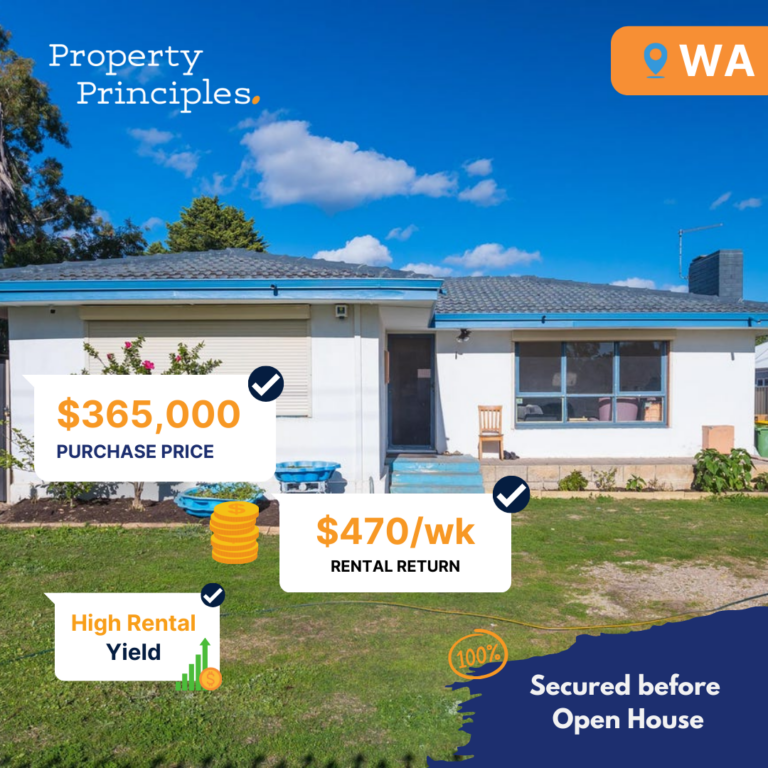When it comes to Property Investing, many potential buyers wrestle with the decision of how much initial deposit to put down. Common wisdom dictates that a larger deposit—typically around 20%—is ideal. But why is that and is it the best way to go?
Why Aim for a 20% Deposit?
The age-old question property investors: should you dive into the market with a deposit less than 20% and pay Lender’s Mortgage Insurance (LMI) or hold off until you’ve saved the full 20% deposit?
“This decision is pivotal and can have significant financial implications.”
Understanding Opportunity Cost
Every investor should be familiar with the concept of opportunity cost. It’s the potential loss or gain from choosing one option over another. When it comes to real estate, the opportunity cost of waiting to save a 20% deposit can be substantial, especially in a rapidly appreciating market but waiting to save a 20% may be good in a declining market (but you should reconsider buying in a declining market).
The Case for Paying LMI & Investing Now
Consider the hypothetical case of an investor, Alex. If Alex was looking to invest in a property priced at $500,000, he/she might consider two options:
- Dive in with a 5% deposit right away:
- Initial Deposit: $25,000
- Time to save for this 5% deposit: Approximately 1 year
- Projected property value after 1 year (considering a 6% annual growth rate): $530,000
- Wait to save a 20% deposit:
- Time to save for this 20% deposit: Approximately 4 years and 2 months
- Projected property value after 4 years and 2 months (considering a 6% annual growth rate): Approximately $637,398.60(We have excluded purchasing costs in this example but a rough guide is 5% of purchase price if you want to run your own numbers)
By comparing the two scenarios, we see that while Alex would save on LMI by opting for a larger deposit, he might end up paying a whopping $107,398.60 more for the property due to its appreciation in the time he took to save.
That is a huge difference and you can see, with even only 6% growth rate, the average person can not save enough to outpace the growth. The goal is to catch a rising market, secure your equity gain and continue your property journey.
LMI: What is it?
LMI, whilst an additional cost, protects lenders in case borrowers default. For investors, it might be seen as the price of early market entry. In a market that’s on the rise, the growth in property value can easily outpace the LMI cost, making the decision to invest with a lower deposit a wise one.
However, is it all good news?
Of course, not all markets appreciate rapidly. In some scenarios, waiting to save a larger deposit might be the better choice due to market dynamics. Predicting market movements with certainty is challenging, and thus investors often need to weigh the potential benefits against the risks.
Avoiding Lender’s Mortgage Insurance (LMI): A deposit of 20% or more often means you can avoid paying LMI. This insurance is designed not to protect the borrower, but the lender, in case the borrower defaults on the loan. While it’s an added expense, it becomes a significant consideration for those with deposits less than 20%.
Lower Monthly Payments: A larger deposit generally translates to borrowing less money, which can lead to reduced monthly mortgage payments. This can ease the financial burden on the investor and provide more flexibility in managing cash flow.
Better Loan Terms: Lenders often view a larger deposit as a sign of financial stability and commitment. This can sometimes translate to more favorable loan terms, including potentially lower interest rates.
Increased Equity: A larger deposit means you start off with a greater stake in your property. This can be advantageous if the market experiences a downturn, as it provides a cushion against negative equity scenarios where the property value might dip below the remaining loan amount.
Risk Mitigation: A significant deposit can act as a buffer against market fluctuations. In uncertain market conditions, having a substantial equity stake in the property can reduce the risk of the investment.
Making an Informed Decision
For investors, the goal is often capital appreciation. Even without specific data, the broader point remains clear: markets move, and they can move fast. If you’re eyeing a property in an area showing signs of growth, waiting might lead to missed opportunities.
As an investor, it’s essential to assess current market conditions, potential growth areas, and your financial situation. Whilst paying LMI might seem like an added expense, the potential return on investment in a thriving market can make it a worthwhile expenditure. Furthermore, the longer you’re in the market, the more you stand to gain from compounding growth.
It’s up to you and your strategy
The decision to pay LMI and invest early or wait to save a larger deposit hinges on your risk tolerance, market predictions, and investment strategy. One thing is clear: understanding the opportunity cost is essential. In many cases, especially in upward-trending markets, the potential growth could far outweigh the cost of LMI, making early investment a strategically sound choice.




